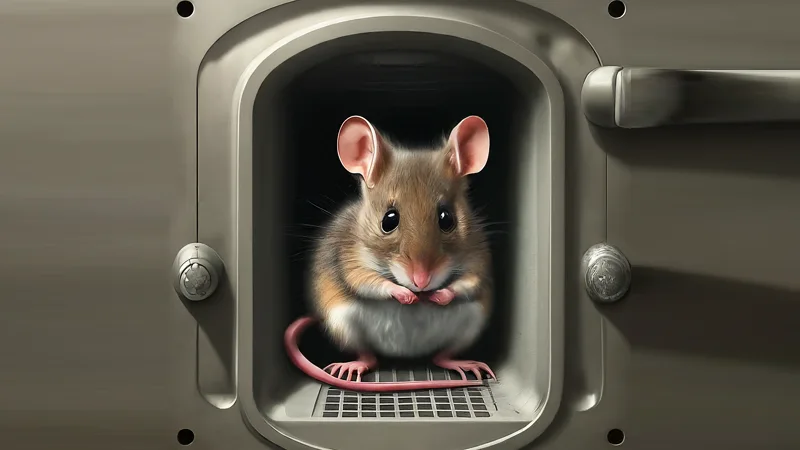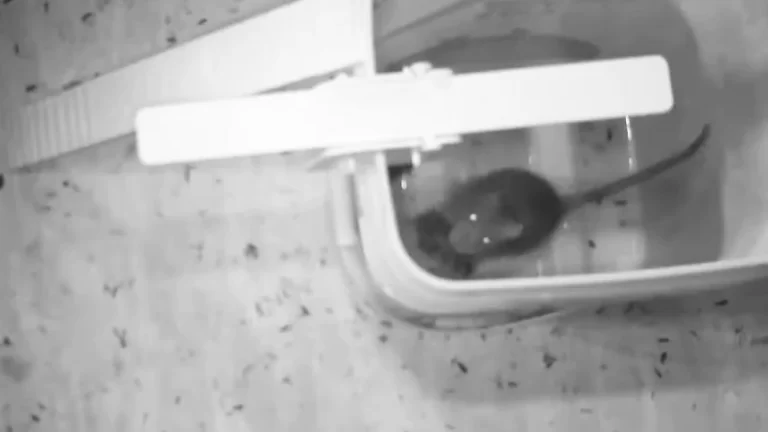How to Remove a Mouse from Your Oven or Stove Vent: Safe and Effective Methods
Discovering a mouse in your stove vent can be an unsettling experience. These small rodents can cause significant damage, contaminate food, and pose health risks. Removing a mouse from your stove vent requires a careful approach to ensure the safety of your home and the well-being of the animal.
This article provides a comprehensive guide on how to effectively and humanely remove a mouse from your stove vent, highlighting the tools needed, step-by-step procedures, and preventive measures to avoid future infestations.

You'll Learn About
Understanding the Problem
Why Mice Enter Stove Vents
Mice seek out warm, sheltered places with access to food, making stove vents an attractive location. Understanding why mice enter these spaces can help in both removal and prevention efforts.
Health Risks and Damages
Mice can carry diseases and cause significant damage to your property. Knowing the risks involved underscores the importance of prompt and effective removal.
Preparing for Removal
Safety Precautions
Before attempting to remove the mouse, ensure you have the necessary safety gear, including gloves and masks, to protect yourself from potential diseases.
Tools and Materials Needed
Gathering the right tools and materials is crucial for a successful removal. This includes traps, cleaning supplies, and protective gear.
Step-by-Step Removal Process
Mice infestations are not only a nuisance but can also pose health risks and cause damage to your property. To effectively remove mice from your stove vent, it’s crucial to follow a systematic approach. Here’s a detailed step-by-step guide on how to locate, trap, remove, and clean up after mice infestations.
1. Locating the Mouse
Signs of Mouse Activity
Mice are nocturnal creatures that leave behind various telltale signs of their presence. One of the most common signs is finding small, dark droppings scattered around your home, particularly near food sources and nesting areas. These droppings resemble grains of rice and can help you pinpoint areas of high mouse activity.
Additionally, keep an eye out for gnaw marks on food packaging, wires, and furniture, as mice constantly gnaw to keep their teeth from overgrowing. You may also hear scratching or scampering noises, especially at night, indicating the presence of mice.
Identifying the Stove Vent
The stove vent is a common entry point for mice as it provides warmth, shelter, and easy access to food scraps. To locate the mouse within the stove vent, start by inspecting the area around the vent for any signs of mouse activity.
Use a flashlight to illuminate dark corners and a mirror to see into hard-to-reach areas. Pay close attention to gaps or openings where mice could enter and exit the vent.
2. Setting Up Traps
Choosing the Right Trap
Selecting the appropriate trap is essential for effectively capturing mice. Live traps are a humane option if you prefer to release the mouse elsewhere, while snap traps provide a quick and efficient solution for eliminating mice.
Consider the severity of the infestation, your comfort level with handling mice, and your preference for humane treatment when choosing a trap.
Placing the Trap
Once you’ve chosen a trap, position it strategically inside the stove vent or near potential entry points. Mice are naturally curious creatures attracted to new smells, so bait the trap with enticing food such as peanut butter, chocolate, or cheese. Ensure the trap is stable and won’t be easily knocked over by the mouse or other household pets.
3. Removing the Mouse
Checking the Trap
Regularly inspect the trap to see if it has captured a mouse. Check the trap at least once a day, preferably in the morning or evening when mice are most active. Be patient, as it may take some time for mice to venture into the trap, especially if they are cautious or have other food sources available.
Handling a Live Mouse
If you’re using a live trap, it’s crucial to handle the captured mouse with care to avoid injury to yourself or the mouse. Put on a pair of gloves to protect your hands from any potential bites or scratches. Approach the trap calmly and avoid making sudden movements that could startle the mouse.
Once you’ve safely captured the mouse, transport it to a suitable release location at least a mile away from your home, preferably in a wooded area with access to water and shelter.
Disposing of a Dead Mouse
If you’re using a snap trap, you’ll need to dispose of the mouse’s body properly to prevent contamination and odors. Carefully remove the mouse from the trap using gloves or a plastic bag, taking care not to touch the body directly.
Seal the mouse in a plastic bag and place it in the outdoor trash bin. Wash your hands thoroughly with soap and water after handling the mouse and trap.
4. Cleaning and Sanitizing
Removing Contaminants
After removing the mouse, it’s essential to clean and sanitize the affected area to prevent the spread of disease and discourage other mice from returning.
Wear gloves and a mask to protect yourself from inhaling airborne particles and contaminants. Use a vacuum cleaner with a HEPA filter to remove mouse droppings, urine, and nest materials from the stove vent and surrounding areas. Dispose of vacuum bags immediately after use to prevent the spread of germs.
Sanitizing the Stove Vent
Once you’ve removed visible contaminants, disinfect the stove vent and surrounding surfaces using a commercial disinfectant or a mixture of bleach and water.
Pay particular attention to areas where mice were active, such as food preparation areas, countertops, and baseboards. Allow the disinfectant to sit for at least 10 minutes before wiping it clean with a damp cloth.
Repairing Damages
Inspect the stove vent and surrounding areas for any damage caused by the mouse, such as chewed wires, insulation, or structural damage.
Replace or repair damaged components to prevent future infestations and ensure the safety and efficiency of your appliances. Seal any gaps or openings in the vent with steel wool or caulk to prevent mice from reentering your home.
By following these detailed steps, you can effectively locate, trap, remove, and clean up after mice infestations in your stove vent, restoring safety and peace of mind to your home. Remember to take preventive measures, such as sealing entry points and practicing good sanitation habits, to reduce the risk of future infestations.
Preventing Future Infestations
Sealing Entry Points
Identify and seal any entry points to prevent mice from re-entering your home. Use materials like steel wool and caulk for effective sealing.
Maintaining Cleanliness
Keep your kitchen and surrounding areas clean to reduce the attraction for mice. Store food in sealed containers and dispose of garbage regularly.
Regular Inspections
Conduct regular inspections of your home, especially the kitchen area, to detect any signs of mouse activity early.
Important Table: Tools and Materials for Mouse Removal
| Tool/Material | Purpose |
|---|---|
| Gloves | Protect hands from contaminants |
| Mask | Prevent inhalation of harmful particles |
| Flashlight | Aid in inspecting dark areas |
| Mirror | Help in viewing hard-to-see spots |
| Live Trap | Humanely capture the mouse |
| Snap Trap | Quickly kill the mouse |
| Bait (Peanut Butter/Cheese) | Attract the mouse to the trap |
| Disinfectant | Sanitize the area after removal |
| Steel Wool | Seal entry points |
| Caulk | Seal entry points |
| Plastic Bags | Safe disposal of dead mice |
Conclusion
Removing a mouse from your stove vent requires a strategic approach that prioritizes safety and effectiveness. By understanding the behavior of mice, preparing with the right tools, and following a step-by-step process, you can successfully address the problem.
Additionally, implementing preventive measures will help ensure that your home remains free from future infestations. Regular maintenance and vigilance are key to keeping your kitchen and stove vent mouse-free. Also care about siding flashing.

